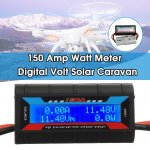I pulled all the specs from the Dometic web site and the user manual. The actual charge rates for any of these devices aren't determined by the capacity of the brick providing the power, but rather by the internal charge controller(s) on the input side. According to the manual, it is a max of 8 amps:
View attachment 571044
and yes, the PLB-40 is capable of operating an external AC inverter off the 12v outlets up to 15 amps ~180 watts (they probably round that down to 150w for their specs). The Suaoki and Yeti have 300w inverters built in (which is why they are larger sized, probably)
With regard to the regulated 12v output, you are absolutely right - anything without that (like the Yeti) is a No-Go for running a fridge because of the low voltage cutoff most fridges have. (apparently Yeti offers a separate $40 cable that has a regulator built into it, but... meh)
All this data just helps each individual make an informed decision about what is best for them. There is no "universal best option" in my opinion. For example, it is fairly obvious that John61ct likes to build stuff, and would MUCH prefer to DIY something that meets his needs perfectly without any compromises. I, on the other hand wanted the lowest cost option that had some basic requirements (like regulated 12v output, a 300w AC plug, and fast solar charging) in a compact portable form factor and at the lowest price point ("QPR"). I'm guessing that you wanted the highest quality plug & play device with the lowest
total cost of ownership (regardless of initial price) backed by a very well respected brand and didn't care about a built in AC inverter or USB-C quick charge ports, and were not concerned with a high purchase price.
We all get what we want - what a wonderful world of options we have!!!








